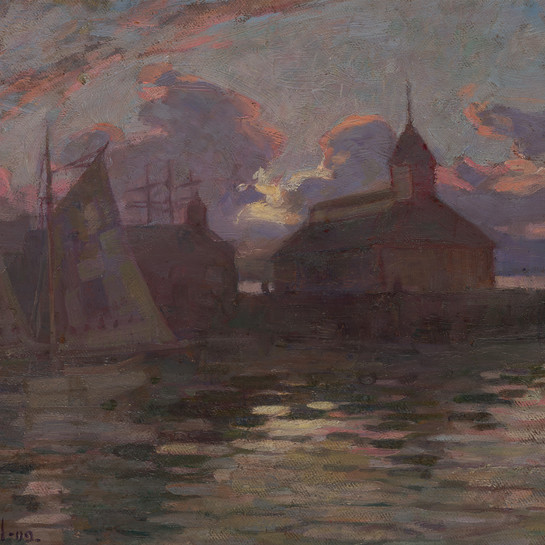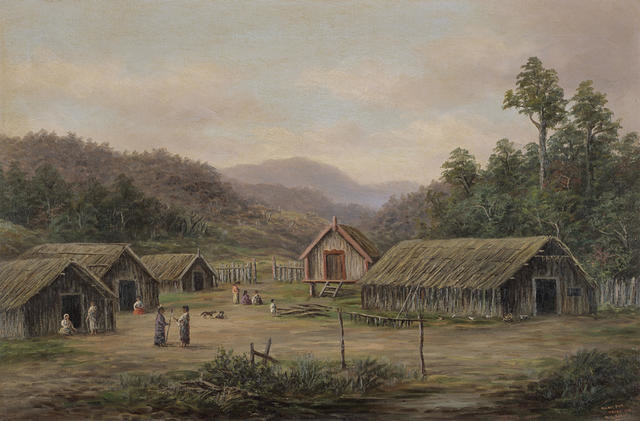W. G. Baker
Aotearoa New Zealand, b.1864, d.1929
Māori Pā, Whanganui River
- c. 1910
- Oil on canvas
- Purchased, 1967
- 595 x 830 x 40mm
- 69/192
Tags: children (people by age group), clouds, fishing, forests (cultural landscapes), huts (houses), landscapes (representations), Māori (culture or style), pātaka, rivers, trees, women (female humans)
William Baker was a second generation New Zealander, born and raised in Wellington, who began his working life as an upholsterer. Most likely a self-taught artist, he exhibited first with the Fine Art Association in 1883 and went on to exhibit at many of the significant institutions of the time. By the beginning of the twentieth century, Baker had become a self-supporting professional artist, touring New Zealand for his subject matter. In this work we see various whare (houses) with a larger whare wānanga (meeting house) and raised pātaka (storehouse), which shows the distinctive ochre pigment frequently used in the adornment of Māori architecture. (March 2018)
Exhibition History
In pre-European days the Wanganui River was an important canoe route into the central North Island and along its reaches there was a large Mâori population. There was a ready market for works that aimed to capture the picturesque qualities of Mâori life in the 19th century. Largely self-taught, William Baker’s style is that of a competent amateur. It is likely that he would have taken a steamer excursion up the Wanganui River when he recorded this scene of a ‘pâ’, or fortified village. Born in Wellington, Baker originally worked as an upholsterer. From 1883 he exhibited with a number of New Zealand art associations, as well as in the ‘St Louis Exposition’, USA, in 1904. Around that time he became a professional artist and began touring the country. He exhibited systematically at agricultural shows throughout New Zealand, as well as holding auctions of his paintings in town she passed through. Baker settled in Titahi Bay north of Wellington for the last thirty years of his life. (Label date unknown)

